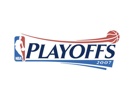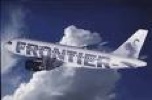
You’ve seen the ads. Subscribe to Barron’s. Stay on top. Get cutting-edge financial and investing advice. (Barron’s is owned by Dow Jones, which owns the Wall Street Journal.)
Now, I ask you, all of you who are airline savvy, to read this article from this week’s issue of Barron’s and tell me how many mistakes you can find. Trust me, it’s over ten. It’s even more than twelve. Yeah, I want to go buy some shares of ARM. Right after I talk to Delta’s Jerry Grinstone. And right after I read analysis from CANYON Securities analyst Ray NEEDLE.
This is legit folks. This didn’t come from The Onion.
Thanks to former TWA’s former SVP of Corporate Communications Mark Abels for forwarding this to me. But I admit, I thought it was a joke. But no, it’s no joke.
Yeah, right. I’m certainly going to read Barron’s for my financial advice. If this is an example of the subject knowledge of the writers they hire — this is the last time I’ll ever look at the publication. Not that I have ever given it much attention anyway.
A big fat BuzzBomb to Barron’s for its pathetic and grossly inaccurate reporting.
P.S. This is a copy of the original article as posted. I would hope the publication will make corrections to the article online — so that is why I have not supplied a URL. Sorry about the weird spacing, but that’s an HTML thing because it was pulled from their site.
__________________________________________
Saturday, May 5, 2007
Delta Roars Back to Life
By THOMAS G. DONLAN
EVERYTHING OLD IS NEW AGAIN. Delta Air Lines emerged from bankruptcy last week and 400
million shares of its new stock opened for trading Thursday on the New York Stock Exchange under the
same old ticker symbol, DAL. The old stockholders were wiped out and former Delta unsecured creditors
became the new ones (employees, managers and the federal Pension Benefit Guaranty Crop. also
received shares).
The shares, as expected, got off to an unremarkable start their first day, with lenders evidently eager to
cash out, as they often are in such situations. In earlier, “when-issued” trading, the shares sank from 23
to 19, and they opened Thursday at about 21. Over the next two quarters, however, the company
should do well enough to justify a price closer to 25. Looking further ahead, two Morgan Stanley
analysts may well be right when they say “buy on material weakness” and project a share price of 27 to
29.
Make no mistake: Airlines are risky investments. They are highly vulnerable to economic slumps,
terrorism, fuel-price increases and overcapacity, and they face intense price competition on key routes.
Delta is not immune. Several years ago we thought it would be less affected by the troubles of the time
than its closest rivals (“Taxiing for Takeoff1,” Nov. 11, 2002). But it was ARM’s (ARM) American Airlines
that actually escaped bankruptcy.
Although Delta shed about $13 billion of debt and lease obligations, 6,000 people from a workhorse of
53,000 and a mountain of assets including 82 planes during its 19 months in bankruptcy, the Atlanta-
based airline has kept the things that made it strong in the past.
It has a reasonable route structure and still dominates its local
hub airport with an operation considered one of the industry’s
most valuable assets. Its workhorse is still relatively loyal,
enthusiastic and mostly non-union. Many of them are
extremely relieved that Chief Executive Gerald Greenstone beat
back a takeover attempt by US Airways (LCC), and some are
impressed by Greenstone’s sharing the pain through pay cuts
for himself commensurate with those imposed on workers.
Delta has rebuilt its finances and now has one of the stronger balance sheets in the industry, with cash
at $2.9 billion and net debt set to be at $7.6 billion by the end of 2007. And it is looking to grow
primarily on international routes, which can be more profitable than the domestic business.
What could be more important than any of these individual traits is the general upturn in the airline
industry as Delta emerges from Chapter 11. As Canyon Securities’ veteran analyst Ray Needle put it in a
recent report, “It is now spring, when an investor’s fancy turns to airline stocks as the industry heads
into its two best quarters. We expect the whole sector to participate and all the airlines that we follow
should rally.” He added: “We favor the legacy sector in the immediate future since they can better take
advantage of the upside cycle with their vast systems, progress in making cost cuts, and broad yield-
management systems.”
In truth, the major airlines are heavily leveraged to the economy,
doing well in good times and doing atrociously in bad times. While
Delta was suffering from heavy competition and high costs,
operating losses amounted to $3.3 billion in 2004 and $2 billion in
2005, before an operating profit of $58 million 2006. For 2007,
Delta projects a pretax profit of about $800 million — about $2 a
new share, meaning the shares are trading for about 10 times
2007 earnings.
“This is rich compared to other non-bankrupt legacy airlines, which
are trading between three and six times 2007 UPS,” Needle said.
“However, Delta is coming out of bankruptcy with $1 billion in
labor-cost cuts and a streamlined route network, an estimated
cost per available seat mile, ex fuel, of 7.5 cents and a sharply
reduced interest-cost burden, with net debt cut more than in half,
down to $7.6 billion. This is strong compared to other legacy
airlines,” the analyst said.
Not strong enough for Prudential analyst Bob McAdoo, who said recently that the new Delta may quickly
drop to the vicinity of $15 a share. Indeed, at $20 a share, Delta’s $8 billion market cap exceeds all
other major U.S. airlines except Southwest.
CEO GREENSTONE, FOR HIS PART, sees the airline’s strategy for the future as an extension and
improvement of the international strategy Delta failed to execute after it bought Pan Am routes in the
1990s.
“When Delta bought the Pan Am assets, it didn’t have the
ability to feed the international system [with domestic traffic
connections],” Greenstone said in an interview. “Now we are
providing enormous feeds to [international hubs in] New York
and Atlanta. You can’t succeed in this marketplace without
feeding.”
Skeptics of the strategy note that a new airline regulatory agreement between the U.S. and the
European Union will expose existing carriers to more competition, especially at popular European
destinations such as London’s Heathrow Airport.
Delta, said Greenstone, calculates that it will have the lowest costs in the New York-Heathrow market
and will also be offering direct service to secondary European destinations, from Edinburg, Scotland, to
Bucharest, Romania, and many points in between.
Delta’s new shares could have some rewarding travels of their own.
______________________________________________________________
Ticker: (LCC:NYSE), (DAL:NYSE), (AMR:NYSE)









